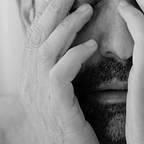Are your photos haiku?
8 minutes… and your pictures will never be the same.
--
I’ve been teaching this workshop this year and was recently asked if I could summarize the principles and constraints I use in my photos. So here’s the short presentation.
I used to show the fifty prints that inspired me while growing up (“The Fifty”) and I’d tell people that simply by looking at these photos, even with no explanation, a person can learn composition. I learned photography solely by looking at these pictures and I’m convinced anyone can; what I didn’t realize at the time was that these principles emerged from looking at The Fifty, so it’s no wonder they are excellent at illustrating my teaching. It was just plain luck that I later discovered that those emergent principles aligned so perfectly with the Zen Arts, and haiku in particular.
Summary of the Poetic Form of Haiku+Photography
There are many kinds of photographs just as there are many kinds of poetry — each follows its own constraints. A photographic haiku is not a pastoral scene of stones and rusted metal, it’s not necessarily quiet and serene. It’s not done mindlessly or to bring you to a meditative state. The haiku is quite structured:
- Two beats
- Hit the “obviousness” inflection point
- Structured composition, but natural
- Remove the extraneous
- A moment of time (not just a thing)
- Embrace imperfections
The Zen part comes later.
I’d love to see your best haiku. tag #haiku
